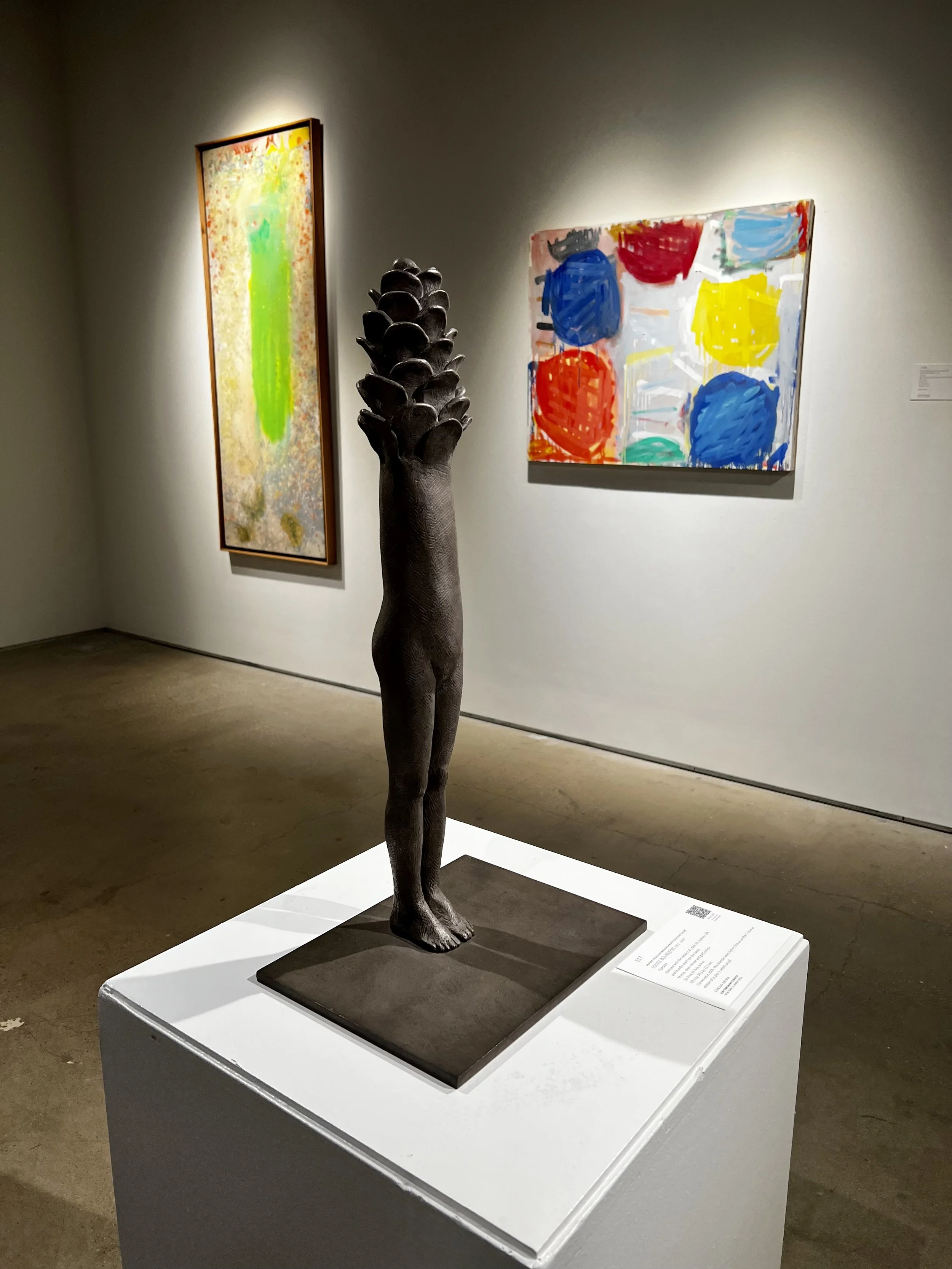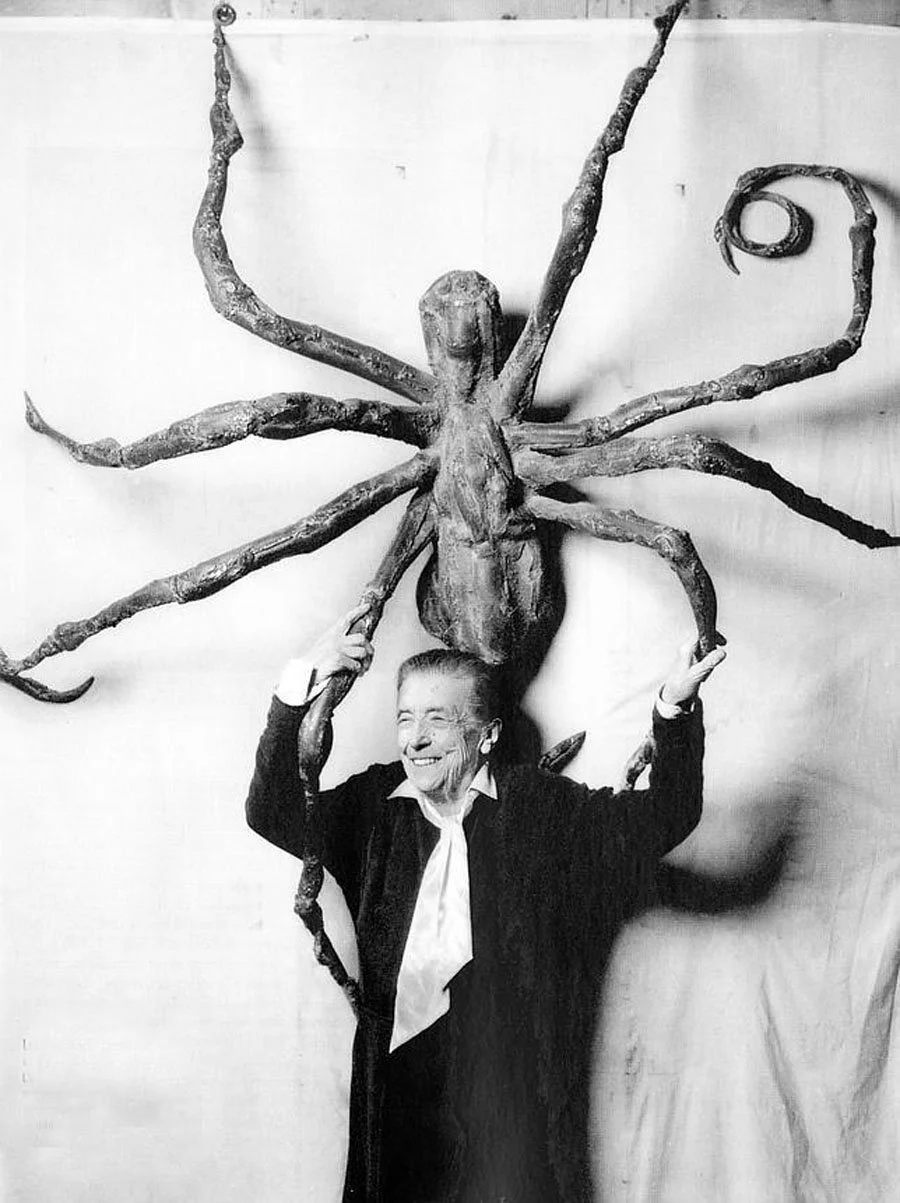Nurturing Pain: Nature, Childhood, and Bronze in “Topiary” (2005) by Louise Bourgeois
Written by Nínive Vargas de la Peña for Sotheby’s Contemporary Curated. March 2022.
Clinging to the experiences of her childhood, Louise Bourgeois sublimed her memories into objects that explored the inner lucubrations of pain, bringing the monsters of her memory into casting. Finding material expressions to the experience of trauma, her pain was sublimed into figures that drive us into empathy through an emotional language reminiscent of abstract expressionism while possessing the quality of surrealistic nightmares. Her crude ethereal artwork has been collected in the most prestigious institutions such as the Museum of Modern Art, the Tate Modern, the Centre Pompidou, the Guggenheim Museum Bilbao, among many others, standing as evidence of Bourgeois’ success into transforming her remembrance into entities that can also make us hurt.
“An artist can show things that other people are terrified of expressing.”
Louise Bourgeois
Blooming
Sculptural Spring
Louise Bourgeois. Topiary (2005). Private Collection.From the sore weight of being a housewife who mutates into motherhood, to the vulnerable state of childhood as a female, Bourgeois’ visual vocabulary crosses generations from infancy to maturity. Portraying the transgressions done unto womankind, the artist transforms her subjects into chimeric and monstrous creatures. Sometimes reduced to abstraction, standing as isolated “skyscrapers” never meant to touch one another, other times as grotesque creatures that appear to withhold an ambivalent nature within their monstrosity. Standing as magnificent as they are intimidating. Louise Bourgeois explores the experience of femininity as an uncomfortable condition within society, recalling her father’s early rejection with a simple quote, “I entered this world by displeasing”. This sense of emotional abandonment fueled her creative potential, subliming it into creatures that shock us with their presence, while longing for our understanding of their nature.
“Through shape and line, material and texture, Bourgeois is able to give a palpable specificity to her memories. More than just marking time, and nostalgic reminiscing, Bourgeois wants through her sculpture to re-create the past, to have total recall to the emotions, to analyze the event, to control it, to correct it, and finally to forgive and forget it. Bourgeois’ sculptures mark a collection of traumas, fears, anxieties, resentments, and unfulfilled desires which through her sculptures she is able to exorcise.”
— TARO AMANO CITED IN: EXH. CAT., YOKOHAMA MUSEUM OF ART, LOUISE BOURGEOIS: HOMESICKNESS, 1997
A bronze sculpture made at the closure of her life, Topiary (2005), presents us an aching reminder of the pains of growth while preserving an archaic solemnity. Using the name of the art of clipping shrubs or trees into ornamental shapes, in Topiary (2005) an intervention into a body that hasn’t yet reached womanhood is implied. Trees appear frequently in Bourgeois’ body of work where they take anthropomorphic forms, creating a perfect yet uncomfortable symbiotic relationship between nature and womanhood due to its implied violence. Devoid of breast or a waistline, the structure solidly stands without any leaf left to be cut. Trimmed and erect, the feminine form appears not to tumble or possess any desire but that to be left standing. The strive to repair and recover from trauma, as plants return to their nature after being shaped into ornamental forms, exists as a fundamental exploration of the artist body of work.
“I transform hate into love. This is what makes me tick.”
Louise Burgeois
In Topiary (2005) if she is yet to sprout, or has done so, appears to be meaningless as the name of the sculpture reveals its sole destiny: to be trimmed. Appearing as an amputee whose head has been replaced by a sprout, the female figure has been paired with mother nature to form a single chimeric entity evoking tension due to the impending violence onto her character. Appearing since her early works, trees represent for the artist “a symbol of a person. It has the right to exist, to grow and procreate”, yet we aim for our mark upon it. Greatly influenced by her memories of injured war veterans in the halls of the Louvre Museum, and her own sister Henriette’s medical condition, the idea of incompleteness lays as a persistent mark in Bourgeois’ oeuvre. Here, a female figure has been completed by nature, marking not only her physical appearance but her psychological identity. Standing with profound dignity, Topiary (2005) yearns for empathy and protection, while startling us into the recollection of our own memories.



